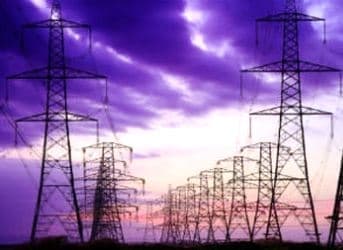America’s energy infrastructure is in dire straits and the American Society of Civil Engineers (ASCE) has given it a D+ in a “report card” that measures everything from the electricity grid’s transmissions capacity to oil and gas distribution channels.
The whole premise of the report is that there is progress, but we’re only half way there.
While technological advancements are rapidly evolving, transmission and distribution systems that would allow us to actually take advantage of these advancements have not been put in place, according to the report. And the specter of cybersecurity threats that arises from these “smart” bounds is not being sufficiently addressed.
The bottom line is that the US is maintaining an electrical grid and pipeline distribution system that is largely old and decrepit—with some of dating back to the 1880s. In the meantime, power outages are a growing problem and every new storm is a cause for panic, and the potential for pipeline leaks has everyone’s nerves on edge.
Assuaging some of this concern is the some 17,000 miles of new high-voltage transmission lines and oil and gas pipelines in the works. But is not enough.
According to the ASCE, power generation in the US is a patchwork of old systems that lack operational cohesion. The report notes that “significant power outages have risen from 76 in 2007 to 307 in 2011—both attributed to increasing operational failures and extreme weather incidents.
Related article: How Renewable Energy will Benefit from US Natural Gas Exports
On the oil and gas distribution front, the ASCE notes that since 2008, a “series of oil and gas pipeline failures have led to deaths, injuries, significant property damage and environmental impacts”, demonstrating a “need for greater pipeline management and maintenance programs”.
The US has some 150,000 miles of crude oil and product pipelines and over 1,500,000 miles of natural gas transmission and distribution pipelines—largely under private ownership.
US energy capacity is sufficient—for now, and maybe even for the next 5-7 years. Beyond that, however, after 2020, the report notes, capacity will become a problem, particularly in terms of electricity generation.
“Excess capacity … is expected to decline in a majority of regions, and generation supply could dip below resource requirements by 2040 in every area except the Southwest without prudent investments. The adequacy of energy pipelines and related operations is also a growing concern, partially due to capacity constraints in refineries and oil and gas transmission systems.”
What’s the answer—money, to put it simply. The ASCE is calling for increased investment in energy infrastructure and warning about the complexities of the permitting process. Investment at the national level already peaked in 2006, and since then has been on the decline.
Related article: How to Spot the Big Oil & Gas M&A Deals of the Future
The biggest funding gap is for distribution infrastructure, which the ASCE estimates to come up short by about $57 billion by 2020, while the investment gap for transmission infrastructure will be short by about $37 billion by that time.
That said there has been an uptick in investment in smart grid technologies to the tune of about $10 billion, with some 25 US states already having adopted smart grid technology policies of some sort. But this is on a state level and, again, it lacks national cohesion.
At the same time, the shale gas boom presents another set of distribution challenges. While drilling and production have made impressive leaps and bounds, transportation issues have not.
Overall, the big picture is this: Demand for electricity is rising but transmission is not keeping pace.
By. Charles Kennedy of Oilprice.com


















